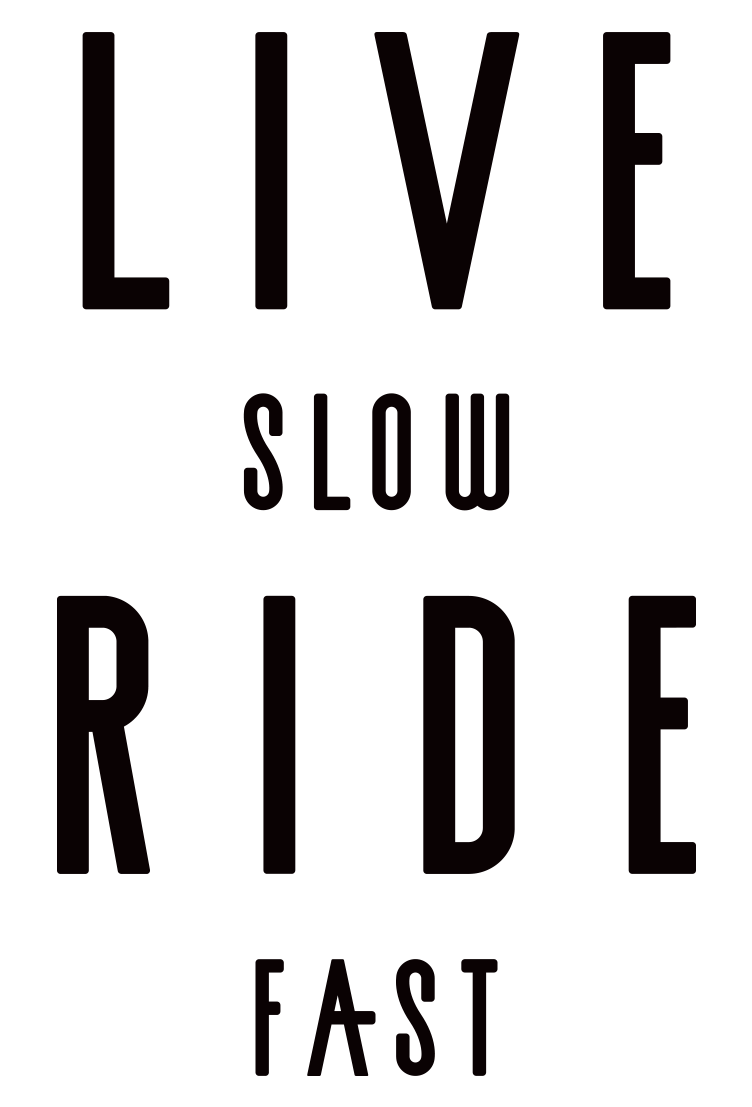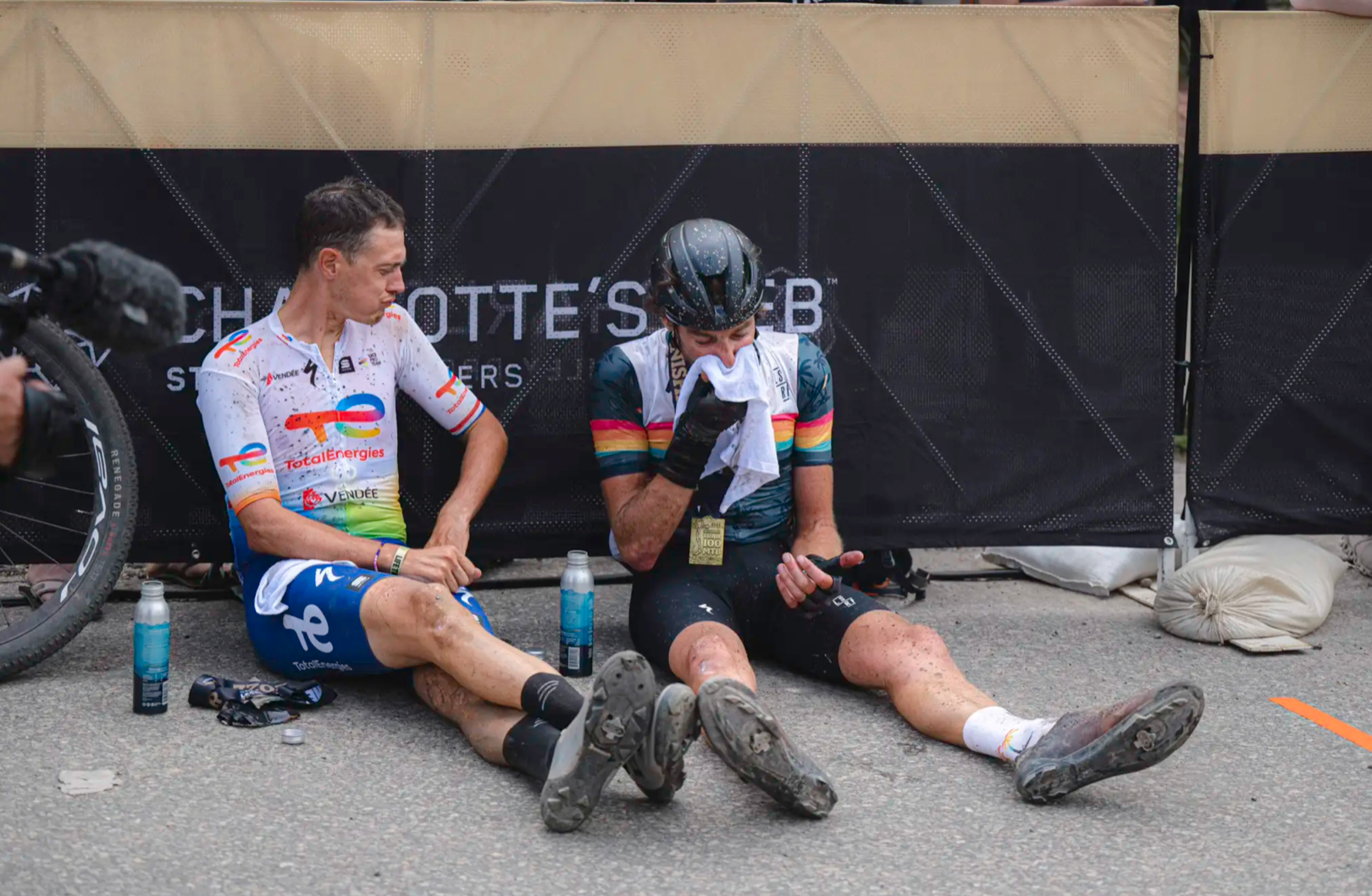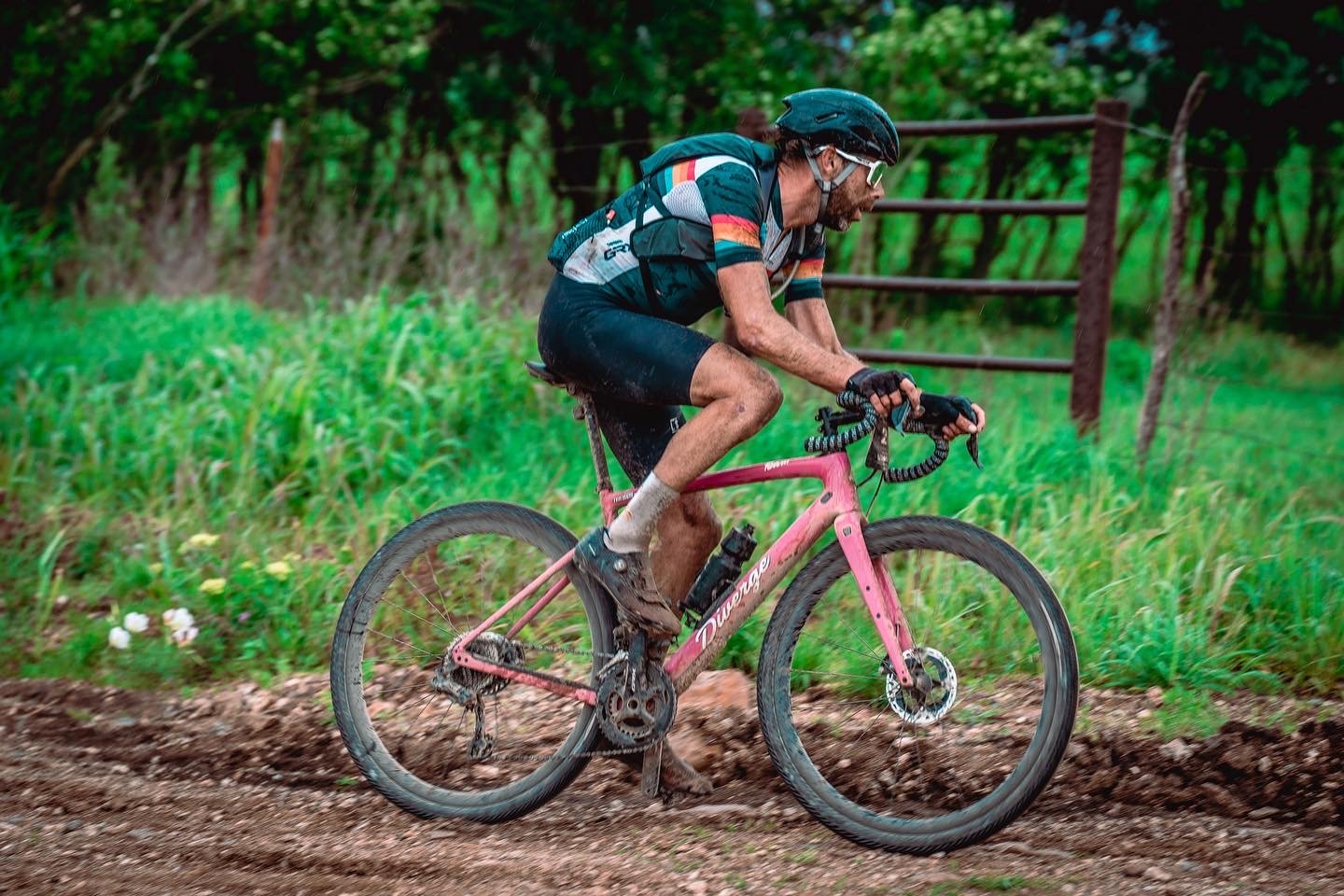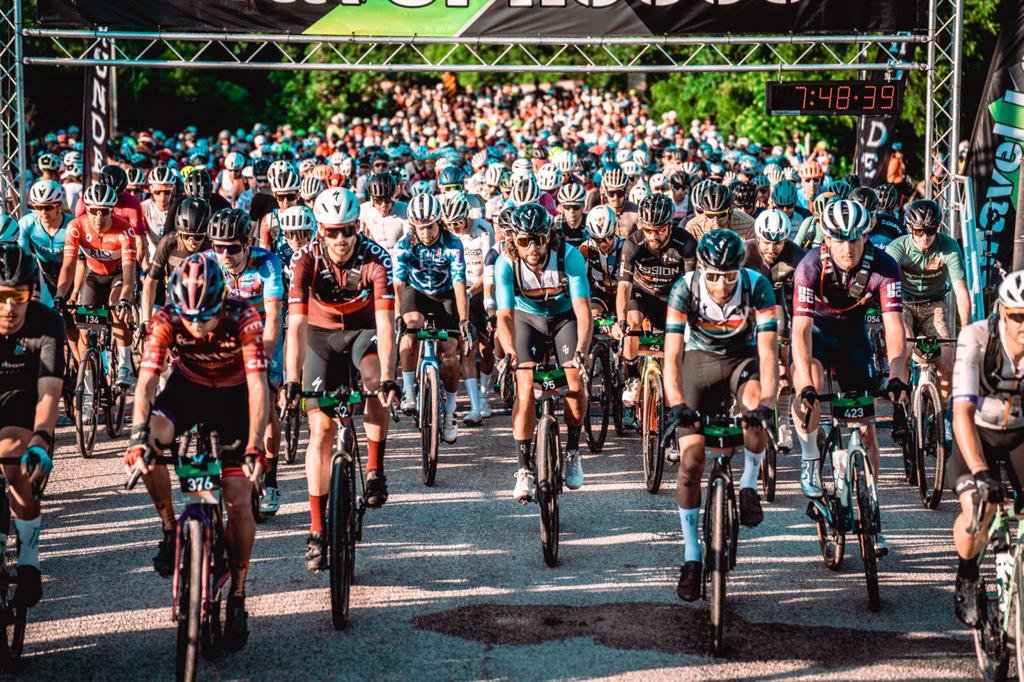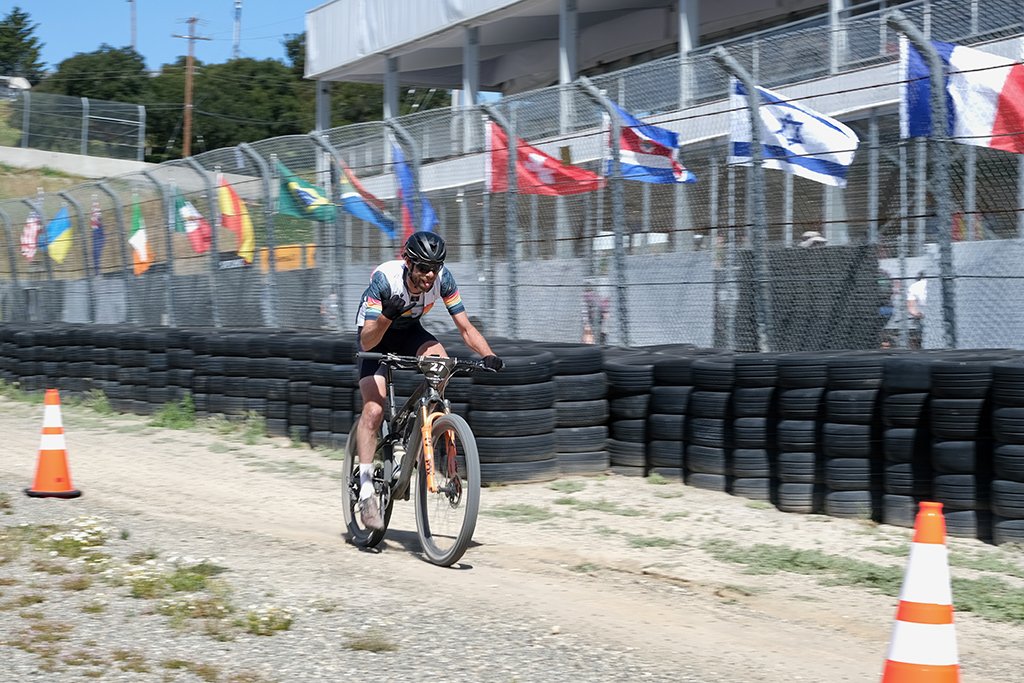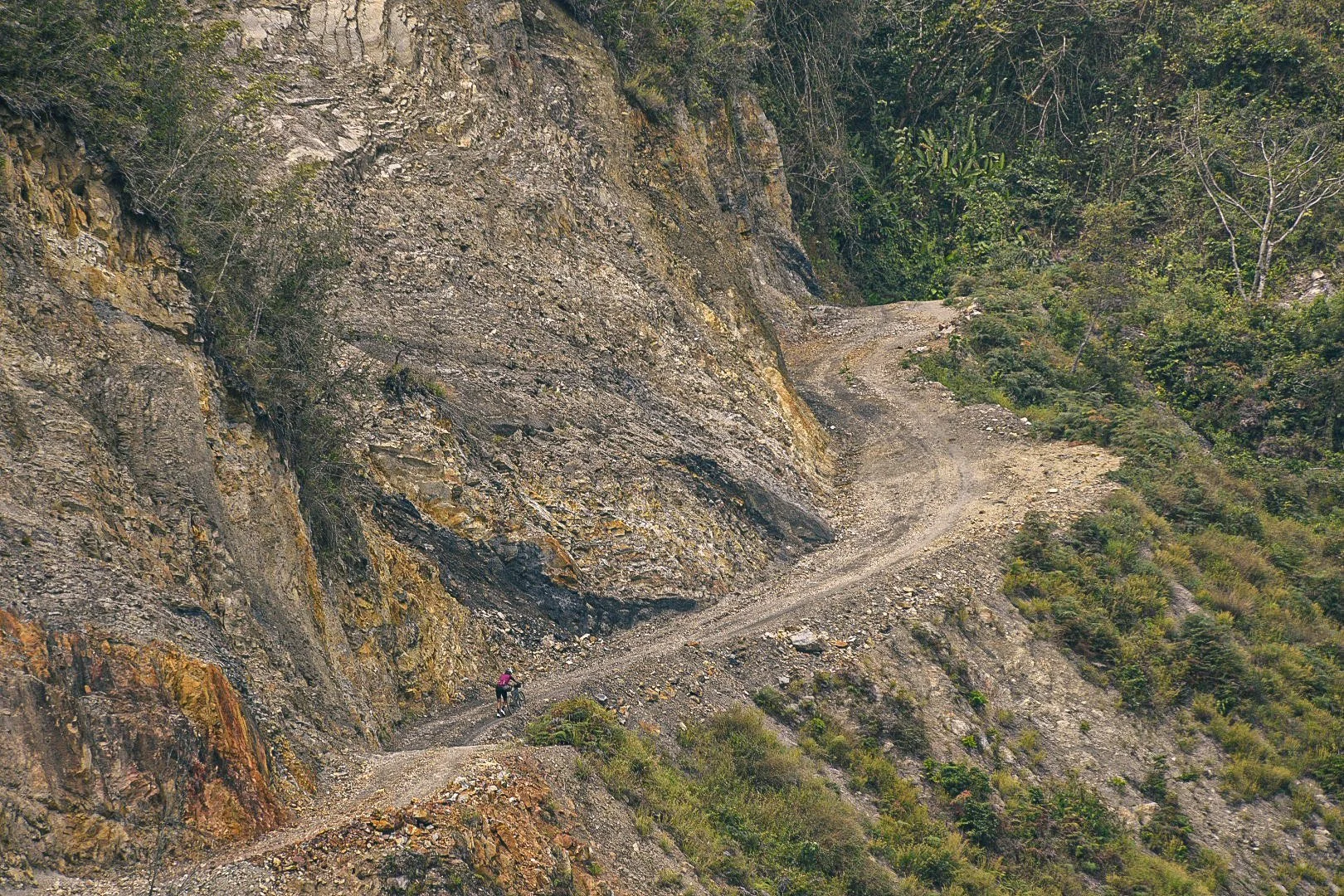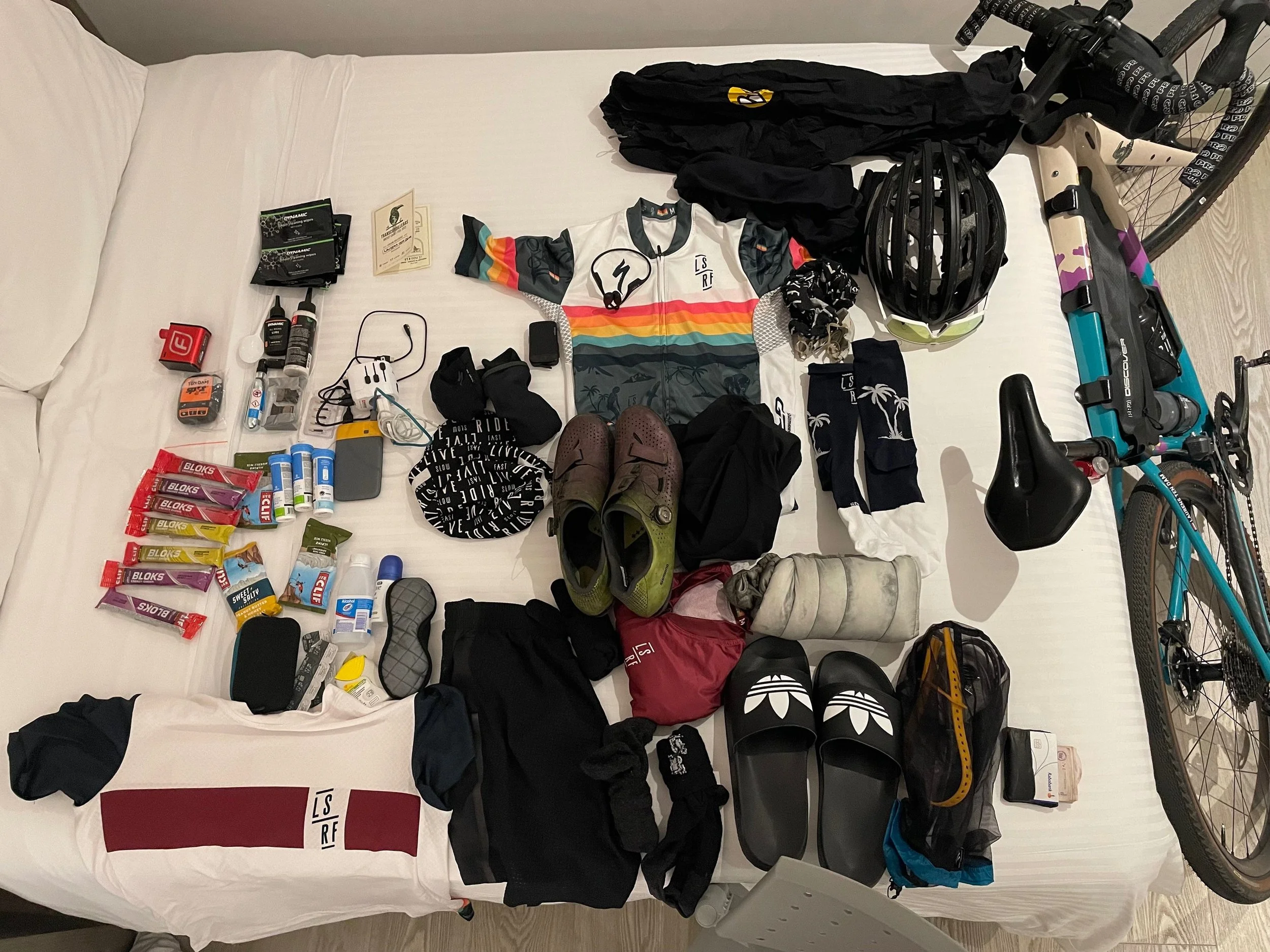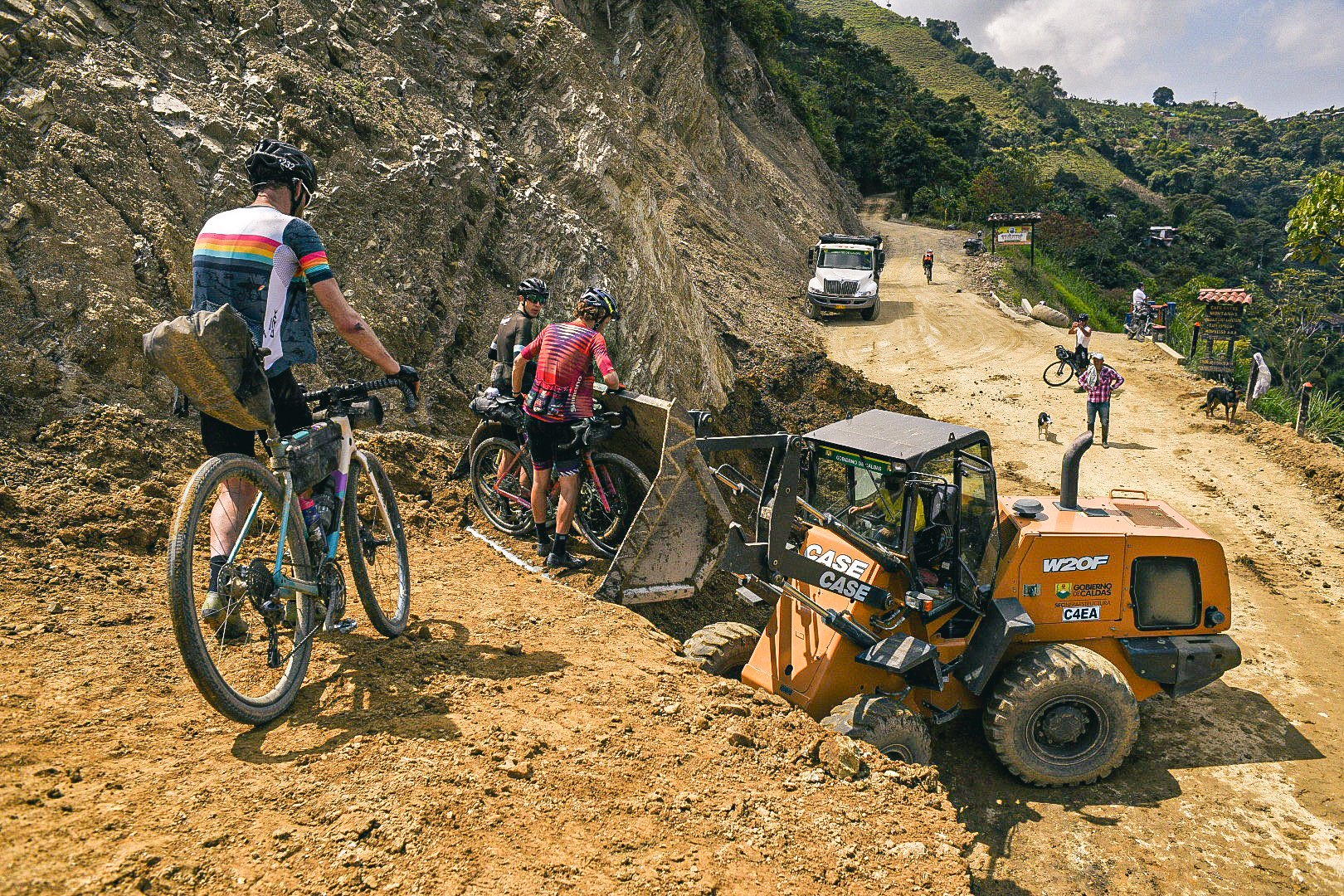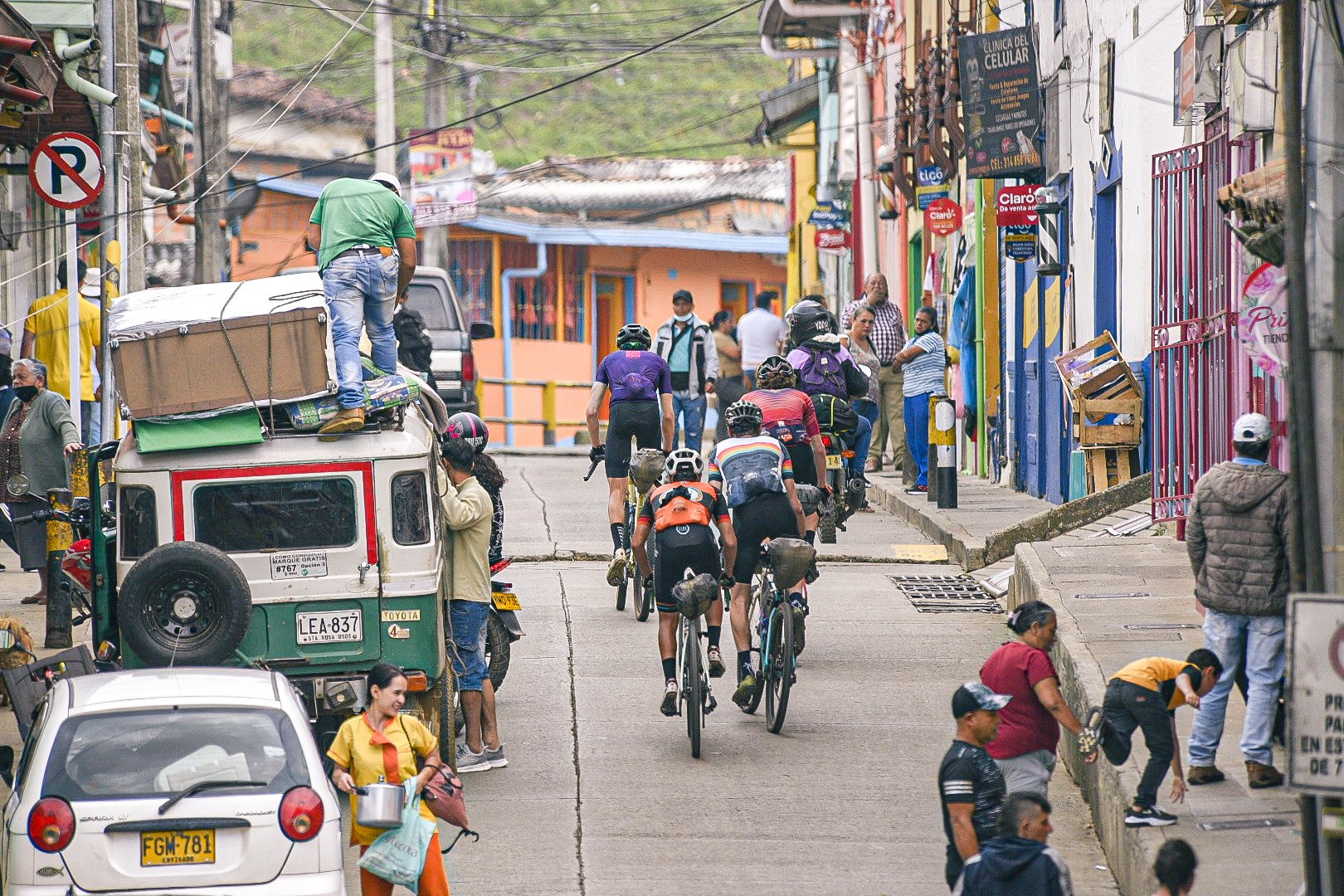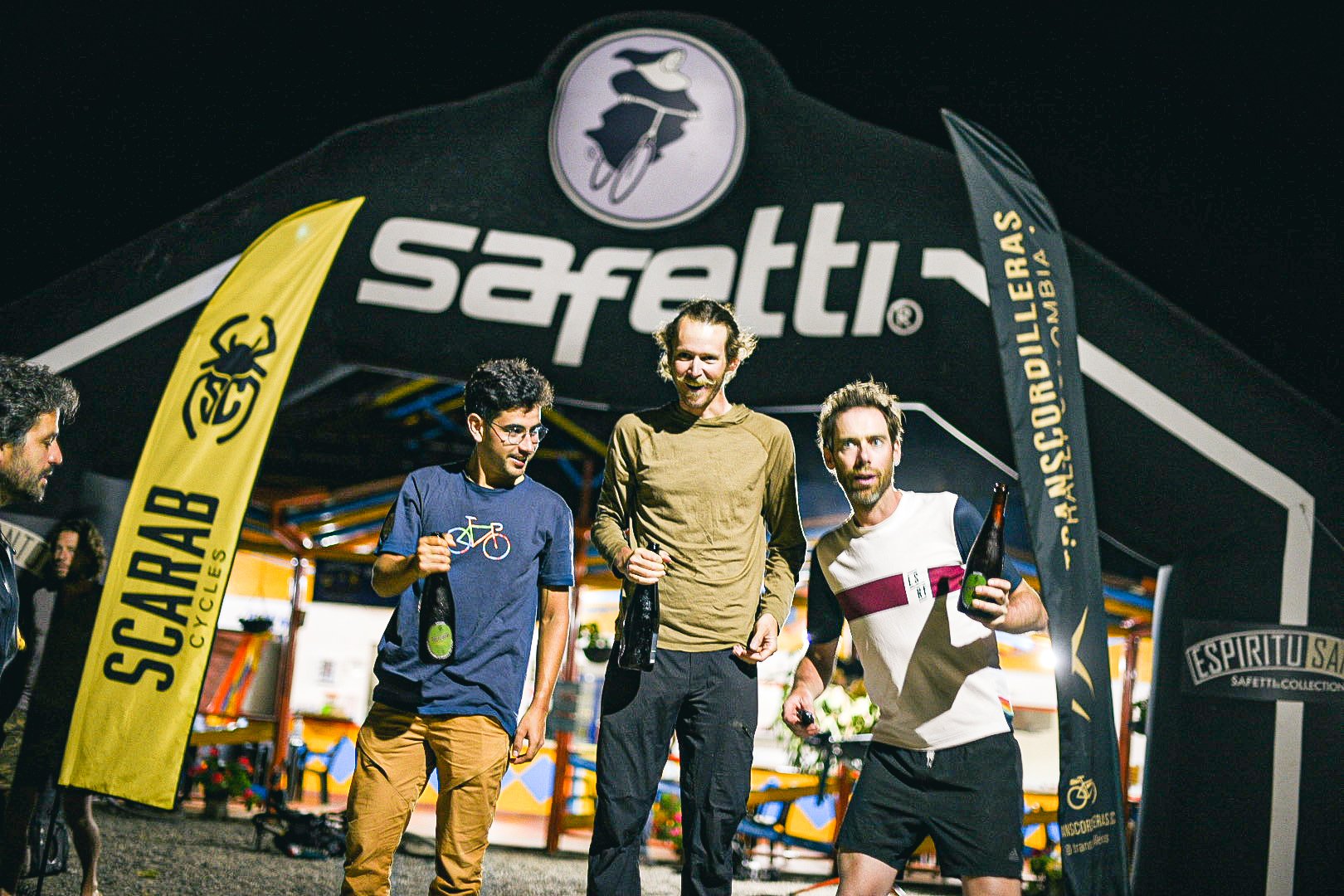2022
big sugar gravel
Big sugar gravelWhen I applied for the LifeTime series I knew it would be an insane year of traveling. But on the flip side it would be awesome to be part of something new: to be part of the professionalism of gravel or offroad racing in the USA. I raced with a different approach towards the races than a lot of the young guns did. I’ve been a pro cyclist already for 16 years and I am extending those years with some off road fun, while balancing a lot of other projects. I try to inspire people to take their bikes more and in the meantime I’m having a lot of fun doing that. The fun part stays the most important. Back in the pro days, I’ve been pretty grumpy when results would not be satisfying. The satisfaction of these trips wasn’t measured by any result. It was measured by the amount of fun we had still racing bikes ones in a while.
To recap, I did five out of six races of the series (one ‘by-race’ was allowed). My best result has been a 2nd place among the LifeTime athletes in Unbound gravel, the race that suits me the most. Furthermore, I did okay in the two other gravel events, while I still suck at mountain biking. I lost a lot of points over there at Leadville and Sea Otter racing flatbars. I tried to learn the trick at age 41 but I didn’t succeed. Never mind, the most important thing is that I traveled to four of those events with friends or family. I could share experiences and felt rich to be able to teach my kids, what can happen when you’re chasing your dreams.
The Big Sugar event was the last event in the series. In order to make the final results you had be at the start line of this event, which made it maybe te most stack field in the whole year. Throw some Specialized World Tour guys from Bora and Quick-Step in the mix and it made for a peloton which reminded me of my World Tour days. But the lead up to raceday was totally different than back in the team bus. The family was having fun in Texas with Fabian, the organizer of Gravel Locos who became a good friend. We traveled to Arkansas in a RV, but we stopped at every baseball field we found to play ball all together. We had fun and there was no time for race nerves.
But oh boy, I felt those nerves in the bunch at the start line and in the first kilometers on tarmac. It was like a start in a stage of Paris-Nice hitting a crosswind section, that’s how the energy of the racers around me felt. Luckily I could manage myself in a good position into the chunky Bentonville gravel. But the diesel engine wasn’t warm enough yet. As this race would take more or less five hours, I noticed there was no holding back in the beginning of the race. With a seven hour race (like the Gravel Locos events) or the big nine hours of Unbound, the young fast guys are a little afraid. They hesitate, and I can warm up. Here? Nothing like that at all: I found myself sprinting out of corners, sprinting up small hills on the big gear gasping for air. You get the picture. Disappointed, I had to let the group go after like 40 minutes into the race to settle for a more gentle pace.
And here I made a mistake. I stopped believing right away. Whereas in Unbound my mind was so strong that I never stopped believing I could win the race, till the final straight line, here I stopped believing in the first hour already. I found a 3rd group on the road, and in hindsight we still did a great job pacing us around the difficult Ozark hills. We sticked together for a long time and started to pick up guys from the front. Guys who collapsed and guys who’s tires or bikes collapsed. I had no clue at which position we were racing as the front group was big when I dropped after that furious first 30 minutes. But somehow the diesel did its work in the last hour, as I suddenly clicked and started going faster. Guys I could barely follow a few hours earlier, were now dropping from my wheel as I started going faster.
Fast forward to the last kilometers of the race: I saw suddenly two guys playing ‘cat and mouse’ in front of me. At first I thought they were some 50 milers who still had some legs, but as I came closer I realized their attacks were too strong and I recognized an ‘Orange Sealed’ kit. This must be Cole Patton, I thought and I started to go faster. I tried to surprise him and the other fella (Owen was his name) but they saw me coming and could stay away untill the finish line in downtown Bentonville. I crossed the line and saw a lot of tired racers around me. Boys I didn’t see all day, but apparently I had come pretty close as they had clearly not finished too long ago. Russel Finsterwald, the guy I was second to in the Gravel Locos race three weeks earlier, had taken the win. I learned a lesson over here at the last race of the year at age 41.
Never stop believing.
Want more? You can watch the video, read the power debrief by Jim from Join.cc and check out the route on Komoot below.
LEADVILLE
It was in 2008. It was shortly after racing my very first Tour de France that I heard about this beast of a race. There were rumors going on about Lance Armstrong returning to racing in the Tour after he got second in a long mountainbike race in the Colorado mountains. In 2009 we raced together the Giro and the Tour and he told me he would return to win it. He kept his promise and from then on the seed was planted in my head. I was going to race Leadville too some day.
Fast forward to 2016. I was living in California in between races in Europe and after the Tour finished on Sunday in Paris we returned “home to Santa Cruz” on Tuesday. It took me and the jet-lagged family two days of road tripping before arriving Thursday night in that crooked old mine town Leadville is. On the spot I learned that the race was established after the closure of the mines to keep the town alive. And they succeeded in doing that. The town was buzzing with at least 3000 racers and their support crews. Every room in every house was occupied by nervous racers. I was curious where they were nervous for. I couldn’t wait to start. I was confident. After all I just had finished the Tour de France, how hard could this race be?
Well, I sucked. I found out the hard way that racing between 3000 and 3800 meters of altitude is a whole different ballgame then racing up Alpe d’Huez in the Tour the France. Not to mention some tricky parts in the descents. I had high hopes of being in the mix for the win but they ended soon after a small crash in the second downhill. Because of the altitude I was racing with a major headache the last 3 hours of the race and in stead of a big party after the finish with lots of beers I jumped straight in my bed in that old miners house we stayed in. My wife told me I looked like I had a fever and I totally felt like that. My heart kept on pounding in my chest hours after the race. It was the first time in my career that because of the suffering I rode my body into crash mode. The beast that Leadville is killed me and I was never coming back.
I didn’t keep my word. Last month I lined up for the 3rd time in that little town in the Colorado mountains. This time it was the second race of the Life Time series and I had a commitment. But I wasn’t alone. I took a victim. Niki Terpstra, my training buddy in the last years of my career, was with me. He asked me if I knew some cool racing in stunning scenery which would fit his road program. I must admit that I don’t think Kansas has a stunning scenery for 200 miles so I made him come over here in the Colorado mountains. I “forgot” to tell him how much I already suffered in the past coming from sea level. The perspective of a roadtrip together to rock and roll on the mountainbike seemed very nice..
Did we suffer? But did we have fun also? Watch the video and read the power debrief..
Photo credits go to Hardcastle Film Company / Allen Krughoff
Crusher in the tushar
In and out.
I pretend to know my body can handle a lot of stress. I put it through many grand tours, hard races and ferocious training camps. If things get hard I just trust that the body will hold everything together. That was the reason to attack 120 miles to go at Unbound. I really thought I was be able to make it. But last Thursday night, 12 hours before departure to Utah for Crusher in the Tushar I started to doubt. Maybe I was going to stretch it too much this time.
The reason for my doubts was my schedule. As I’m currently busy making podcasts before and after every Tour the France stage, I couldn’t leave Europe for too long as this is an important project for Live Slow Ride Fast Media. I didn’t want to abandon the ship for too long and decided to fly in at the very last moment. The difference in time zones helped me with my planning as my Friday actually contained 32 hours. The plan was made. I would fly in Friday from Amsterdam, pick up my rental car in Salt Lake City airport and drive the 3 hrs towards Beaver, Utah. Saturday was raceday and Sunday I would fly out again.
This plan only worked if there was no delay or whatsoever during travel or I wouldn’t even make it to the start line. It was very tight and one of the reasons for my doubts. The other one was that the race was designed as a hard climbing stage in the Tour the France. Lots of climbing (3000 vertical meters) and the start was at 2000 meters altitude while the finish was at 3150 meters. A hight I never reached during a single stage at the Tour the France or Giro d’Italia. Coming straight from sea level this was an extra gamble. I was curious if my body would hold this amount of stress. I was going to climb the same amount of meters in one day as in the whole month after Unbound training at home. I got some last minute advise on nutrition from Pete Stetina (no hydration pack as there would be plenty of water on course) and I would run the same tires as in every race. The Specialized pathfinder 42’s. No place for doubts on that side.
Travel went smooth and I was in time in Beaver to pick up my numbers. Chris, the Specialized offroad team’s mechanic, had my Crux for me race ready. I opted for the light bike because of all the climbing. After a quick shave of my legs, necessary as it was the first time since Unbound, I was in bed by 9 pm.
I didn’t even need my alarm which was set at 4 AM to wake up. Jetlag did its job and I was alive and kicking way before it sounded. My breakfast consisted of real “travel ninja oats’ from the microwave in my hotel room. I took the oats in a ziplock from home and got the milk from a 7 eleven on the way in. I got my coffee from the nearest gas station traveling to the start. I was feeling good cruising in my rental car and ready to suffer. I did’t make this whole trip to go easy. I was going to give everything. That’s how I felt.
The Crusher has a really mellow atmosphere compared to Unbound. I already noticed during the pick up of my numbers, that there was no such thing as stress in Utah. Following this pattern we rolled out pretty easy. No elbowing or fighting for position. We used the first 15 km as a warm up before the real first climb started.
Pete Stetina started to ramp up the pace once it got more steep and we hit the gravel. Then Keegan Swenson took over. Keegan is the leader of this Grand Prix by a big margin and today he showed why once again. This guy is a maniac and he just started going without looking back. I saw the power we were pushing and knew I had to calm down. 450 watts is a lot for me on sea level but on 2500 meters way above a sustainable tempo for me. So I decided to play it smart and do my tempo. I went exactly the tempo I could hold for one hour to the top and found myself in the third group at position 12.
Happy with my effort we hit the downhill. The day before I heard something about washboards and I didn’t care at all. Whatever. I was too busy to come here to make concerns about the state of the gravel in Utah. I’m happy I acted that way because although the descent was very, very bumpy, the bike did a perfect job going down fast without any risks. I felt in control and saw later that on the 22 km downhill segment I realized the 7th time of the day. All without knowledge on turns or bad surface. I was in the zone.
As said, the mind was really good. Ready to make the maximum. When the downhill ended, my little group came quickly back to the second group, which made us the second group behind the solo leader, the beast Keegan Swenson. After 85 km there was a sandy part, which reminded me of the beaches at home some guys where dropped and we started the ultimate climb with 5 guys. I was still in the mix.
This ultimate climb is called the Crusher for a reason and actually the opposite of that ‘washboard downhill’ we just did one hour before. It was cool hitting it at the front and being cheered on by all the people still going down. The guys in my group went slightly too fast for me and I dropped back doing the same thing as on climb one. Pacing myself on the speed I knew I could maintain for 60 more minutes. Unfortunately that speed wasn’t good enough to hold on to place 6 as Lachlan Morton and Payson Mcelveen came back from behind and popped me.
I ended up at place 9. Far from Keegan as he motored away from us in cannibal style. But pretty close to the other guys. I crossed the line crossed eyed but very happy and proud. The body didn’t collapse, I fought with everything I had in me and felt a little bit like the climber I used to be. I didn’t make the journey for nothing. I actually climbed one spot in this series standing 9th now, but more important I felt happy and alive during this 4 hrs and 18 minutes racing my bike. I gave the racer inside me the monthly dose of adrenaline.
After the finish there was lunch for everybody, arranged by the organizers. The whole bunch was eating tacos and chit chatting about the race. As said in Utah stress doesn’t exist. People were full of race endorfines and the atmosphere was really cool.
As I rushed home Sunday I sticked to that lunch and didn’t look for any afterparty. It was time to find my bed and return to Europe. But not before a Sunday lunch in Salt Lake City with my former team doctors Eric Heiden and Massimo Testa. It is called Live Slow Ride Fast for a reason. After that I hit the plane to return to the Tour the France bubble everyone is in.
Photo credits go to Marc AR
UNBOUND
Unbound Power Debrief by Jim van den Berg | Join.cc
riding with the heart of a lion and the brains of a bonobo
The World Championships Gravel, the Superbowl of Cycling, the one gravel race that rules them all…Unbound Gravel is by far the most popular and important gravel race of the calendar. Even in the Netherlands, a bunch of journalists on weekend duty had to type their butts off to keep up with all the latest news from Kansas. A race that covers 200 miles on endless gravel roads, crossing rivers and ranches in the hart of rural America. Being the second race of the Life Time Grand Prix series, it has all the potential of becoming brutal and decisive for the rest of the season. Laurens, who is the only European candidate invited to participate in these series, was ready to roll.
A month before, on May 11th, Laurens travelled to the US with buddy Thomas Dekker to prepare themselves for this event. After Laurens’ second place in last year’s Unbound, nothing was left to chance. In three weeks time, a total of 64 training hours was completed and another gravel race, Gravel Locos, which Laurens had won last year, was to be the perfect preparation for the big event. Unfortunately, Gravel Locos was overshadowed by the murder of Mo Wilson. And of course, it didn’t end there. Throughout the whole month, the dramatic loss had its effect on everybody involved in the scene. It being the wish of the parents of Mo, gravel racing continued and on June 4th, Unbound started at 6 a.m. at sunrise with about 4000 participants to cover a distance the size of Holland.
The intensity of this event is unlike any other, which really becomes clear when you take a look at the numbers. What really strikes, is the amount of energy needed to complete the course at this speed. Laurens produced 9726 kilojoule in 9 hours and 20 minutes. That is about 60 % more than what Mathieu van der Poel needed in classics like Paris-Roubaix. Most top professionals deliver around 6000 KJ in similar races. The amount of kilocalories needed for this amount of KJ is around 11.000 kcal. That is because you need to produce about 5 times as much energy, then is delivered onto your pedals. A signifiant part of that energy is lost to “warmth’’. An amount that can be expressed in, let’s say, 21 Big Macs.
To do so, Laurens rode 289 Watt on average and 322 Watt normalized power, which is practically the same as last year (287 and 319). But this year, they rode faster than ever (they took almost an hour of the parcours record), the surface was muddy and Laurens rode on his own for a mindblowing 100 km. I would argue that his powermeter was somewhat off last year. This year his power output was comparable with the other top riders.
Circumstances were far from ideal this year
Like I said, Laurens wasn’t going to sit still and wait this year. The first hour was relatively quiet, with 240 Watt on average, but then he decided to go for it with two other riders. The 80 kilometers that followed were ridden with an average of 280 Watt, but it wasn’t until our Dutchie shook off his compagnons, he started to put on the engine. From km 100 to km 200 Laurens got to a mindblowing 330 Watt. It was an exploit that would soon cost his head. The chasing group got him back and he had to let go right away. Moral was broken and for about 40 k long, he couldn’t manage to put in more than 272 Watt on average. On the other hand, it gave him some time to recuperate and he somehow found in his mind and body a spare battery of positive energy. In the next 40 k he pushed 302 Watt and chased back the head group. He managed to get back to them with only 20 k to go.
In those last 20 kilometers, it was obvious that the best had already been given. On the very last little climb, an effort of 481 Watt for 34 seconds was enough not to lose contact with the other leaders, but just about enough to let go of the fifth rider of that lead group. In order to avoid a sprint, Laurens gave it his last shot at a kilometer and a half before the finish line: in 17 seconds he rose to 798 Watt in order to shake off his rivals, but that wasn’t enough.
The final acceleration for Laurens had not even started before it was stopped and Ivar Slik won the sprint of three with ease. Laurens passed the finish line 4 seconds later at a 4th place. I can’t help but think what would have happened of Laurens hadn’t made it so hard for himself for such a long time. His best 20 minutes efforts of 361 Watt can be seen after only 134 kilometers. After 6500 kJ his best 20 minute effort is ‘mereley’ 330 Watt. His best 5 minute effort is, for instance, in the first 4000 kJ 397 Watt, between de 4000 kJ and the 6500 kJ 386 Watt and after 6500 kJ ‘only’ 366 Watt. Surprisingly, his best 5, 10 and 30 seconds of 802, 758 and 622 Watt are pushed in the very last part of the race, after 6500 kJ.
What can I say, after such a long distance, everybody’s light will start to fade. We cannot say for sure that Laurens would have won Unbound, if he had ridden more with his head than his heart. The thing we can be sure of, is the fact that this performance was pretty extraordinary. It was maybe the best performance (physically) of his cycling carreer. And that goes to say.
Photo credits go to Marc AR / Photo of Laurens riding through the mud: unknown photographer
Gravel locos Hico
My American road trip started in Texas. I am here in the USA for exactly four weeks to race three races. Gravellocos, Rule of Three and Unbound. This all culminates in a four week “American roadtrip” while visiting old friends I made last year and making new ones along the way.
Thomas Dekker is my partner in crime for the whole trip and “Hossel” Dennis Bruin accompanied us the first week. We arrived Wednesday night and went straight to the “car barn” of Fabian. The race promotor of Gravel Locos.
Fabian is the most characteristic promoter I ever met. He became a good friend after I attended last year’s event and takes care of everything. Literally everything. The guy takes care of my housing (actually for the whole month), makes the Gravel Locos race trophies himself, cooks dinner for 1500 people, arranges all the reststops on the spot and creates a three day unique atmosphere where all the pros meet at dinners and lunches together. In stead of the world tour approach of being on your own all day arranging your own stuff, he encourages us to mingle for three days, share a laugh, drinks and food and race our balls (or boobies) off at the end. Then after the race finishes, he opens the music festival himself by taking place behind the drums. The amount of energy he has is incredible and admirable.
Fabian. The Man.
I started Gravel Locos with number one as I won it last year and I felt good Friday morning. The jetlag was gone and I couldn’t wait to race the next day. And then after a podcast I did with Ian Boswell, where I was the guest on his ‘Breakfast with Boz’ series, some really bad news reached us. Moriah Wilson, the rising star of the gravel scene, a 25 year old girl who was living in San Francisco was reported to be shot in an Austin house Wednesday night. She was supposed to race Saturday and making her way to Hico when it happened.
A dark cloud entered my brain. I met her briefly last year around Leadboat (the combined races of Leadville and SBTGRVL) when our Sprinter campervans were parked next to eachother to camp before the races. We met last April again before Sea Otter Classic, a race she won and on top of that, she became my colleague as she earned an ambassador contract at Specialized, the company she worked for as a demand planner. She was nice, humble and a bad ass on the bike. Cycling seemed so irrelevant to me that Friday. I couldn’t get my head around what happened. A human tragedy in the gravel scene.
Her family was in contact with Fabian and urged him to let his event continue as Mo would have wanted. So we did and after a really emotional start and a procession to the first river crossing at 12 km into the race, we started after a moment of silence. Fabian did a fabulous speech that gave all of us goosebumps and it was the most impressive tribute I ever experienced during my life or career.
My head wasn’t into racing and I saw my friends around me having the same problem. It took 20 miles before the first attack happened. It was an attack out of pain for Mo - fellow friend and ambassador Ian Boswell did the attack en we slowly started racing at km 30.
The level this year seemed to be a lot higher than last year when I won. My presence in the USA last year inspired training buddies Jasper Ockeloen and Ivar Slik alias the Slikmeister to experience an American adventure for one month, doing exactly the same races. Ian Boswell was there, Kiel Reijnen, Pete Stetina and a bunch of strong Texan mountainbikers. But that didn’t mean the race was faster. The size of the front group was big and that caused negative racing for a while. Nobody wanted to split turns evenly and tried to sit on wheels. That’s why the race felt slow.
But the weather changed things up. After 10 am the temperature raised close to a burning 40 degrees Celsius and people started to degenerate of that. The first mandatory reststop where everybody had to stop for 2 minutes was reached with a big group. At the second stop after 170 km we were left with only 12 guys. The final could begin.
I felt surprisingly good after the depressing beginning and decided to “ride like Mo’. I was literally thinking ‘What would Mo have done?’ before launching attack after attack in the final 30 km. But unfortunately my legs were not good enough to succeed. I could get small gaps but after like 2 /3 minutes trying to go solo every time, the group came back. I hope it was caused by the hot weather and not by a lack of form.
The best shot for the win was when I closed a gap on the Slikmeister and the two of us rode away. I counted already a 1-2 for the “Dutch Maffia” but Peter proved why he ruins gravel as he pulled us back at last moment ;)
Then Jasper did a strong attack with three miles to go and immediately we knew: that’s the one. We rode for second place and I don’t know if Mo would have done the same but I settled for 8th. I couldn’t get my ass out of the saddle to sprint.
With Jasper Ockeloen after the finish
This was the weirdest start to my American adventure I could imagine. My legs are good and I am proud of my level of racing after last year’s crash in September, but all this seems so irrelevant now. And race life goes on, up to the next event. How I would have loved to see Moriah crush it.
All photo credits go to Marc AR
sea otter classic
It's the first race of a series of six of the Life Time Grand Prix 2022. Three of them are raced with drop bars on gravel bikes and three are raced on flatbar full suspension mountainbikes. The races are well spread though the season, so it gives us us riders the time to adapt to the bikes we race on. The series are big, it's prestigious and there is a lot of money to earn. I applied for a ticket and it happened to be that I am the only European allowed to enter the series. No pressure, right?
It is going to be an insane year of traveling for me to race those series. At a quick glance in November it all seemed reasonable, but on the front eve of these series I started to doubt my choices. Something that is not unfamiliar to me before big events. I am always considering life choices when, for example, my alarm is set for 4 am on raceday and I can’t sleep the night before. But here I had to leave my family at home for a week and it wasn’t going to be the only transatlantic trip of this year. Five more to follow. What was I getting into?
But Sea Otter in Monterey proved to be a soft landing for me. I lived in this area in 2016 and had time to visit old friends, do the Giro Tuesday ride and visit the Specialized HQ before the event. I had breakfast in my favorite bar in Santa Cruz and the people at Aptos Street BBQ still recognized this skinny cyclist as one of their regulars back in the days. The first days were a giant trip down memory lane.
Bike fitting and wind tunnel testing at Specialized HQ
Once we entered the race venue on Thursday I was overwhelmed. I knew this venue was recognized as one of North America’s main cycling events, but I hadn’t been able to visit it before due to World Tour obligations. A great venue in nature at the Laguna Seca Raceway and an exposition, that would be the main attraction of this week. All bike brands where there and the many races from lower to top level were a nice distraction from all the bike stuff displayed. I counted three pump tracks for kids to play on and had to think immediately of my kids, who could have ripped here all day.
Bike presentation at the venue
Here I was, Friday night, the night before raceday, drinking a can of IPA in front of my camper and laughing. I had to pinch myself hard. Tomorrow is raceday Laurens, but all my nerves before raceday were gone. I think it had to do with the fact, that it was a mountainbike race. I just had to do my best and my “all I can do is good” mentality took over. But the friends I saw all day long and the support from my sponsors at the expo were a big part too. I went to bed late and slept like a baby. That has been different before.
Saturday morning the racer inside me was back in race mode and although I rolled up to the start half an hour before, I found myself in the middle of the pack at the start line. The mountainbike starts are really something else. Not the mellow gravel start was expecting. I saw people warming up on rollers and nervous riders. The start was crazy fast and this was not my game and I entered the single track halfway the pack. While sprinting to the single track, I had to dodge some early race crashes. My adrenaline raised sky high and I tried to follow wheels in fast downhills. I managed to stay in a good group for a while, before I suddenly felt my rear rim hitting rock. It hasn’t been like that before, so I needed to dismount and check my bike. The tire was slowly leaking and I did hit it with co2 before continuing. I was dropped out of my group and it took a while before regaining the focus you need to rip all that single track.
I still had to pump co2 twice in order to finish the race. But I finished with a smile on my face. The 3 hrs 15 at full speed and full focus had raised my “be happy hormons” big time and I couldn’t wait to start the podcast with Mr Gravel Colin Strickland afterwards to talk some gravel bullshit (listen to this podcast here).
Some beers and laughter further, we started the engine of our Storyteller Sprinter and headed six hours south on highway 101 to visit my friend Renger van der Zande at the Indycar weekend in Laguna beach. While steering on that highway, still buzzing from race weekend, I came to a conclusion. My choice to race Life Time this year was awesome and I can’t wait to live more adventures along the way. Next stop? Unbound Gravel, we’re entering my game.
All photo credits of this article go to Randy Higashi
Do you want to know more about the technical details of this race? The numbers, the digits, the watts, etc? Read the Power Debrief by Jim van den Berg from Join.cc. He will analyse the outcome of Laurens’ powermeter and give his conclusions. You can read The Power Debrief here.
Transcordilleras
Stage 1 was almost done. I was second behind Peter Stetina, my fellow gravel pro from the States and I just didn’t want to. I didn’t want to get off my bike again and having to push it up the Colombian hill, fully loaded. So I persisted. With my last powers, I tried to make it work on the 31 x 34. Oh, if only I would have brought a 40 sprocket. It would have taken an hour or so to get it on the bike, probably not entirely as advised by Shimano, but at least I would have had it on my bike now. But no, last week I was convinced I would easily conquer those steep Colombian mountains in thin air, using the 31 x 34. Boy, was I wrong. And so I continued pushing the pedals on the 25 % goat track, until my rear wheel slipped and I couldn’t get out of my pedal fast enough. Just like an amateur at the first traffic light, I fell on the ground, in slow motion. Cramp in my left foot immediately followed and as I sat on the ground, stretching it out, I overthought my choices in life. How did I end up here, on Colombian rocks, sitting on my ass at 3000 m altitude?
We would have to go back to last year May, during my American adventure. I had just won Gravel Locos and their Colombian camera-man came up to me and said: ‘’Laurens, I know you are about to do a 4-day race in Kenya at high altitude this year (see Kokoto), but did you know that we have a similar challenge in Colombia? This bike pack race takes you over three mountain ranges of the Andes, from east to west, 1100 kilometers long and 25.000 meters of altitude. You get 8 days. Our last winner was Mauricio Ardilla.
When he said ‘three mountain ranges’’, I was intrigued. Moral was high that weekend and, let’s be honest, how bad could it be? When I heard the name ‘Mauricio Ardilla’, he had me. I keep a fond memory of our time as riders for team Rabobank between 2008 and 2010, helping Menchov to his Giro d’Italia victory. I could definitely see us conquering the Cordilleras of Colombia. The deal was made and I would come race in 2022.
Thomas Dekker, also a former teammate of Ardilla in 2008 and Hossel Dennis, my business compagnon, loved a little adventure too. After our trip to Kenya and the experience of racing on high altitude gravel, we were not afraid. Registration was done, we booked our flights, arranged our bikes and off we were.
Preparation is everything. So two weeks before the race would start, I flew to Colombia to get used to the altitude. Jumbo-Visma’s Tom Dumoulin and Koen Bouwman had invited me to stay with them and train together. This old guy was flattered and so I immediately accepted the invitation. An old school training camp: train, eat, sleep and having fun along the way.
During that trip, I met the organizer and first winner of the Transcordilleras race, Mauricio Ortez. His nickname, ‘the Angel’, was no joke. He arranged everything for me and the boys. A new house to stay, when the first one was impossible to get to by car, the best places to eat and all the covid-tests we needed. And as he told me the ins and outs of the race, something became very clear to me…
When you pronounce it very quickly, 25.000 meters of altitude seems okay, but on a gravel bike, given 8 days, it is an immense challenge. The parcours crosses several peaks of 4000 meter. The Angel explained to me, that self-supported in Transcordilleras, actually means self-supported. So no clean outfits and no refreshments at the finish. No ‘Clif Bloks’ given to you during the race. No water bottles. But also no mechanics making sure your bike is race ready again the next morning. You had to do it all by yourself. From the start till the finish on day 8, you had to take care of everything yourself. You were allowed to leave a 5 kilo bag in the van, which you would see again 8 days later. Time was stopped after the finish of every stage, and then the fun could start. Clean and prep the bike, wash your clothes and make sure they dry, get diner somewhere, buy snacks for the race, sleep and get breakfast somewhere. For me, Mauricio’s nickname was turning slowly from Angel to Devil, until he assured me that we weren’t going to die in the Colombian jungle. Our GPS trackers would make sure we didn’t….a big relief.
Packing-stress, are you familiar to it? The last days before this adventure it consumed me. And this time, it was the normal stress times ten. Everything I packed had to pass the two golden rules of the Angel. Rule number one: is it light enough? Again, every gram counts when you have to climb that much. And rule number two: make sure to keep your bike in tact. So all personal comfort was thrown out of the bag again. Even our diva Thomas wore the same shirt in between rides for 8 days, but he did bring that extra inner tube. See the packing list for the complete set-up including weights.
So here I was, on my ass, day 1, looking for the courage to get up again and push my Diverge with all the bags up against the hilly road. I must not complain, I repeated to myself. If I was to complain about it, being second in the stage and all, how would the rest feel? Thomas? Hossel? Last time I saw my mates was five hours ago, when Peter, me and a bunch of fast Colombians accelerated on the first climb of the stage.
Of course I continued. I had no choice and eventually, it was me who had registered for this race, nobody had forced me. So I arrived after 8 hours of hard labor in Mongui, a small mountain village. Dead tired, but the first daily routine was waiting to be done. Food had be poured in this empty body as soon as possible, the bike needed attention and the clothes were dirty. This routine after every stage became sort of a mantra. But luckily for me, the Colombian people were really nice to us. They hurried to make me a hot plate of rice, veggies and chicken within 10 minutes after the finish. I was allowed to wash my bike at the same spot where the plates were washed and the lady of the hotel insisted on washing my clothes. She lit the fire place and our jerseys were dry again in no time.
Speaking of hotels, you have to book them yourself, as well. After registration and paying the fee of 350 euros, your are given an old fashioned tour book, including a list of hotel suggestions. Prices vary between 10 and 40 euros per night, but only in the bigger cities you can book the more expensive hotels. A full tummy will cost you about 3 to 4 euros. All together, you don’t have to afford much to suffer for a whole week…
I say ‘suffer’, and don’t get me wrong, crossing the Andes is something different than the Eiffel, but luckily it didn’t get as bad as it got the first stage. I got out of bed the second morning, broken and a bit afraid of what this stage would bring. During breakfast I heard stories of people getting ‘rescued’ at 1 o’clock in the morning. What would this week be like? But in this second stage, the famous BOYACA gravel was served. The finest gravel of Colombia reduced the amount of back pain immediately. We finished lower than we had started and we ended with a respectable 26,5 km/h average. Much better than the 15 km/h of day 1. And that was just me, ending in second place…
Don't think in terms of problems, think in terms of solutions.
No, there was a nice flow in this race week. There were really heavy stages, like for instance day 4, when the heat was also taking a toll on the participants. But after a hard stage, there was always a stage that ended at a lower altitude. The thing that stayed at the same level all week? The helpfulness of the Colombian people. In every town, we were welcomed as kings and queens. Sometimes there was a local bike shop, where they would fix your bike. Or the boys at the car wash took care of my bike, polish wax included. I sometimes had to wash my clothes under the shower, when there was no washing machine at the hotel. Drying the clothes was the biggest challenge. You can imagine the joy when finding out you can actually dry your clothes in a micro-wave. A dry chamois in 5 minutes, wow.
The smallest revelations can make you happy, when it’s just you and your bike for a whole week. That, for me, was the beauty of this experience. So little stuff to bring with you and the challenge of getting through this week with only this. For me and my 55 fellow racers, having warm food after the race, a lukewarm shower and a bed of warm blankets, was all we needed.
What I did need was a week of training at altitude to be ready for the upcoming gravel season. Well, I certainly got what I hoped for. I broke my all time ‘training load in one week’ record, with 8 hours. Last record was 37 hours in the first week of the Giro of 2009. This week in Colombia I raced for more than 45 hours, which goes to show how much of an effort this was for me also. I admire my fellow participants, showing the perseverance they did. Some of them literally came in at 10.00 pm every night. And then they had to go through the same routine as I did in the afternoon. Get food, fix bike, clean and dry clothes, get some sleep.
The Colombian people are so resilient! I have learned so much from them. They have a solution for everything and they don’t worry about it. In retrospective, I understand the way Mauricio Ardillo behaved 12 years ago, when riding together. He never worried about the next day. Here in Transcordilleras, I was often preoccupied with breakfast time and the early start of the stage (sometimes at 7.00 pm), whereas nobody from the organization was. And if there was a minor problem, we had left-over rice from the night before. Problem solved.
I could really enjoy the final days of the race. Day 7 was a fast race on tarmac, which allowed the back and arms to have some rest. The last stage was a short one, with 3000 meters of descent and only 1500 meters of climbing. This way, everybody was back in time to celebrate at the finisher’s party. And I have seen my share of finishers parties. From sad conference rooms in Paris to big nightclubs. But this one was the best. They had rented a beautiful mansion with a pool, there was pizza and cold beer. Every participant was asked to go on stage and got an applause. And rightfully so. Whoever finishes this race, gets respect. Conversations kept on going till late, there were about 55 stories to tell.
I recognized a feeling I always seem to get after these parties. An empty feeling, a bit depressed even. I know where it comes from. I had experienced an intense week, with no room for resting. After exhausting rides, you were already in a hurry preparing for the next day. And now, there was nothing, a big empty space. What to do next? I don’t have to do anything. And so you wake up at 4 o’clock in the morning the next day and you can’t sleep anymore. I switched my bed for a hammock in the garden and thought about the whole week. Finally, my brain had time to digest. There was a week, worth of two months of impressions, ready to be organized.
The empty feeling I described was soon gone again, when I got home and faced normal life’s deadlines and business meetings. But is does mean that this race was pretty much the real deal for me. The intensity, the long stages, the minimum of comfort. Maybe, it does even more resemble the really old days of cycling. The general classification counts in minutes, not seconds (doesn’t have to) and is pointed out with the help of the clock on the church tour. Groups of riders ‘raid’ local bars to get snacks and water. Everything you have to fix any problem with your bike is in your bag. If you are in for the complete ‘pre-war cyclist’s experience, register for next year. Maybe I will see you, because I am definitely coming back. But don’t say I didn’t warn you. Transcordilleras (Crossing the Andes) is no walk in the park.
All photo credits of this article go to Transcordilleras
